I Tried a Few Free AI Interior Design Tools, and Here’s What I Liked
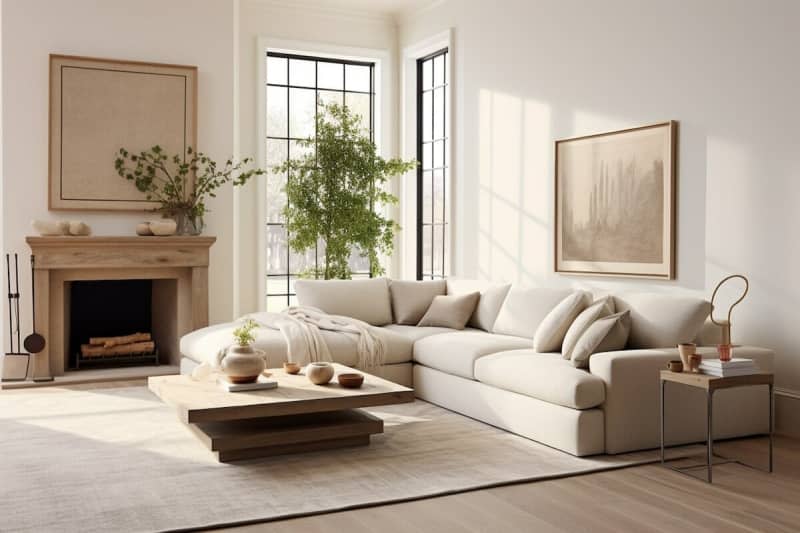
Table of Contents
At its core, interior design is a largely tactile process. You can pin inspirational images and save Instagram posts all you want, but the magic happens when you start feeling fabrics, arranging furniture, and adding finishing touches like coffee table books and throw pillows. Still, that’s not to say design can’t benefit from technology, and with the advent of free AI interior design tools on the market, it’s becoming easier than ever to make your space sing.
As an avid design enthusiast (and a strong supporter of working with pros as budget allows), I was skeptical that AI design tools could achieve even a fraction of what’s possible with a trained designer. I was curious, though, nonetheless. For me, AI proposed an intriguing middle ground — somewhere in between shelling out thousands of dollars for an expensive designer and going at it alone with just my Pinterest boards as guidance.
An up-and-coming category in the AI world, virtual design tools offer a range of services, from conceptual tasks like helping you narrow in on what your aesthetic is to real design processes, like “sketching” a room, offering furniture layout suggestions, and even simulating lighting conditions.
Determined to suss out the best AI interior design tools currently on the market, I spent several weeks testing some of the most well-known programs out there as a way to design spots in my own home — a dead zone between my living room and dining room that I just can’t figure out what to do with. While all the programs were fun to play around with, certain ones were more helpful than others when it came to achieving an actionable design plan that I could implement in my own space. Check out my nine favorites below — plus, how to make the most of AI interior design tools and tricks I learned along the way.
How to Use AI for Interior Design
Come Prepared
A fair warning: Just because you’re using an AI tool to assist with your design doesn’t mean you won’t have your own homework to do. Many of the tools on this list rely on knowing the existing specs of your space (think: measurements, photos, or even links to current furniture). You’ll get the most out of each if you come as prepared as possible for your session.
Talk the Talk
If you have any experience with other AI systems (like the very popular ChatGPT), you know that many of them rely on your ability to verbally communicate what you’re looking for. The more specific and descriptive you can be with your language inputs, the more relevant your final AI interior design rendering will be. Before you set out to experiment with these tools, brush up on a bit of design lingo so you can properly convey what it is you’re looking for. Tweaking a phrase like “A bedroom with a wall detail” to “A bedroom with floor-to-ceiling box molding” can make the difference between a design deliverable you love and one that misses the mark.
Have Fun Experimenting
Many of these tools (and the AI category, in general) are still in their infancy, so you’re bound to run into a few issues, whether that be a bug in the system or a wacky room generation that places a pillow on the mantel. (True story: This happened to me.) It’s a good idea to go into your design sessions with a playful attitude and remember these are just supplementary tools meant to make designing your space more interactive and enjoyable.
Know the Limitations
AI interior design services can do a lot, but they’re not going to instantly transform your space into something out of the pages of Architectural Digest (at least, not yet). Each of the tools on this list comes with its own limitations, whether that’s in its innate functionality or specific services sheltered behind paywalls. While nearly all of the services have free versions, they are limited in their capabilities, and you will often have to pay more (or go to a human design pro) if you want a total soup-to-nuts design scheme.
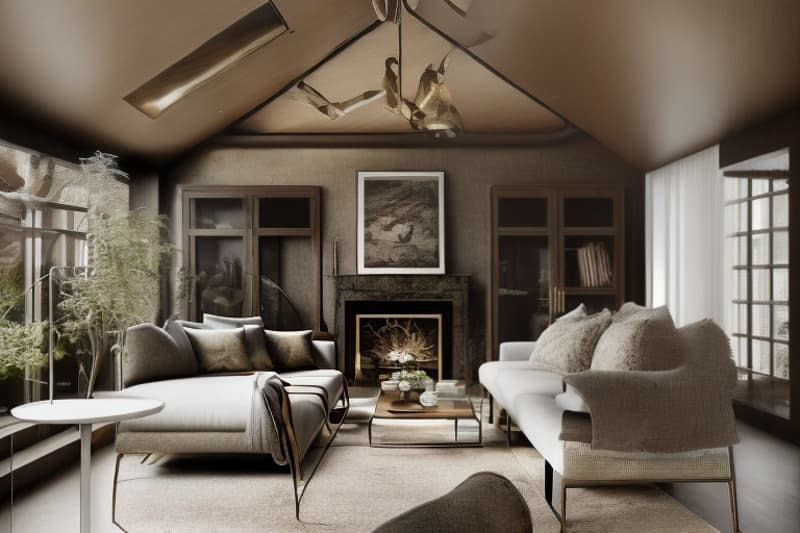
RoomsGPT
One of the most user-friendly AI tools I tried, RoomsGPT takes the common AI prompt model and utilizes it to generate semi-realistic renderings. The free version of the service relies simply on uploading an image of your existing space, choosing what type of room it is (i.e., a living room, bedroom, etc.), and naming your design style from a concise list of about 25 descriptors. The system will then generate two AI iterations of your design, with the option to regenerate if you feel like neither suits what you were looking for.
Who it’s best for: RoomsGPT is best for budding design enthusiasts looking for visual inspiration for their design projects.
Good to know: While RoomsGPT is great for visual inspiration, it doesn’t churn out a totally actionable design scheme. Implementation of the inspiration to your room will depend on your ability to interpret the rendering and source items similar to those pictured, and the service provides nothing in the way of paint colors or finish ideas. It’s also worth noting that the free version of the service boasts limited design styles and no language prompt option, which can be utilized in the paid version to generate more specific design renderings.
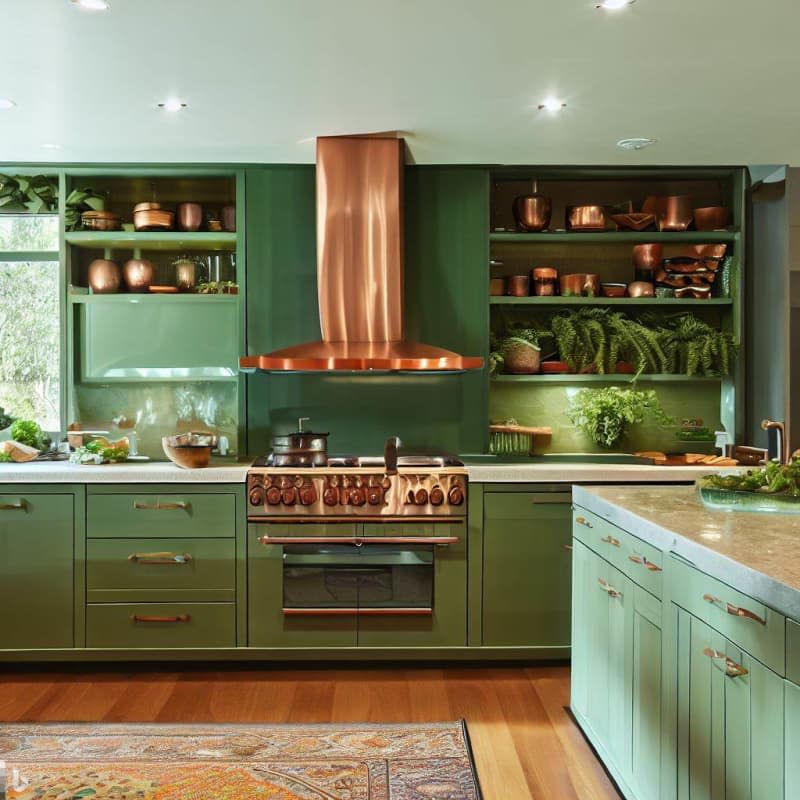
Microsoft Bing Image Creator
Powered by Microsoft’s Bing search engine and Dall-E 2 AI technology, the Microsoft Bing Image Creator combines realistic AI renderings with design resources to empower novice and pro designers alike. The tool relies on language learning algorithms, allowing users to input a request into the system (like “green organic modern kitchen with copper range hood”) to generate design inspiration. While the tool itself is free, it does work on a “reward” system, where each prompt costs you one reward point. To earn more, you simply need to browse using the Bing search engine.
Who it’s best for: Microsoft Bing Image Creator is best for semi-knowledgeable design enthusiasts looking for visual inspiration for their design projects. You’ll need to be able to accurately describe (and modify) your prompts to get the rendering as close as possible to what you had in mind in the first place.
Good to know: Because Microsoft Bing Image Creator runs on language prompts, there’s no option to upload an image of your existing space to inform the rendering. This means that you’ll get visual inspiration, but it might not directly relate to your room’s actual architecture (i.e., it may show a window where you have none, for example). There also isn’t an option to further modify your prompt/image once the rendering is complete. You’ll need to start anew and be more specific with your language to generate even slight changes (like removing a light fixture), and you might not get the same design upon the second rendering.

Decorilla
Imagine traditional interior design and AI had a baby. Well, that baby would be Decorilla. The innovative service marries the best of both worlds, allowing homeowners to work with an interior design pro at a steep discount and get realistic AI renderings of their space. To use the tool, you simply need to upload an image of your room, answer a brief design questionnaire, and tell the team how much money you’d like to spend. Decorilla’s design pros will do the rest, delivering you a comprehensive scheme complete with a variety of concept previews, realistic room renderings, a shoppable product list, paint color suggestions, room layouts, and more.
Who it’s best for: Homeowners who want to work with a designer — but are OK with doing so virtually — will love Decorilla’s helpful service.
Good to know: Decorilla is the most expensive option on our list, with per-hour design advice starting at $75. There won’t be as much fiddling and experimenting on your part, as you’re handing off nearly all of your design to-dos (including the AI elements) to an interior design expert. Additionally, the turnaround time for a design from Decorilla is considerably longer than the near-instantaneous results other AI tools deliver. This is for good reason, as substantive design work is taking place behind the scenes, but still worth noting.
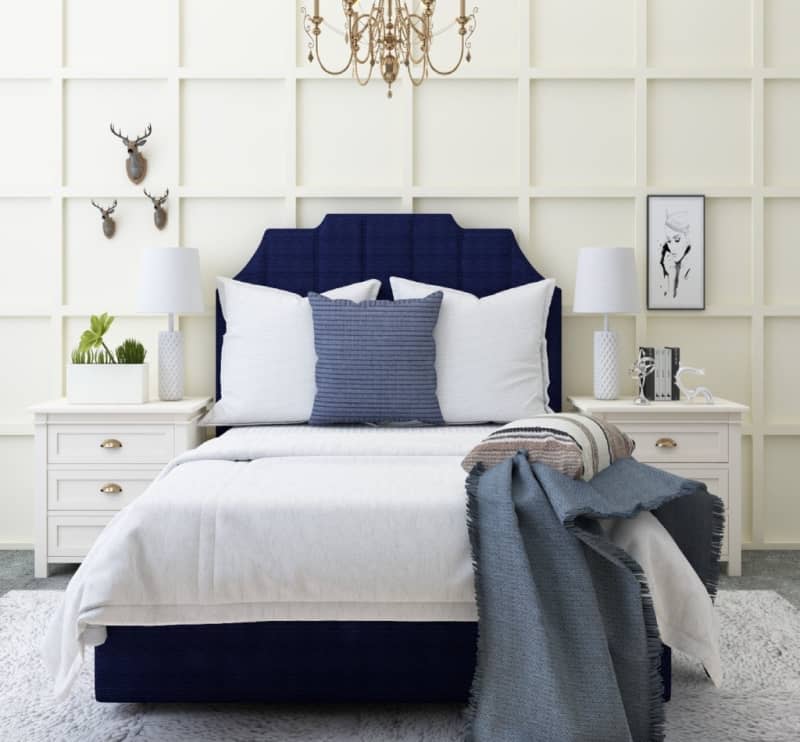
Foyr Neo
Geared primarily towards interior design pros (and those who fancy themselves amateur designers), Foyr Neo takes the best of several design programs (like AutoCAD and SketchUp) and combines them with AI technology to create an all-in-one user-friendly design interface. The system includes tens of thousands of 3D models, allowing designers to cater their furniture and design choices in renderings to real-world product suggestions.
Who it’s best for: Design pros looking to streamline and expedite their process, specifically if they work in e-design.
Good to know: Foyr Neo has a variety of packages, ranging in price from $59 a month to $159 a month. While the system itself requires no previous training in niche design programs, you do need to have a handle on the basics of interior design and a good idea of your aesthetic and design needs. Foyr Neo is not as helpful when it comes to generating inspiration or helping you identify your design aesthetic.
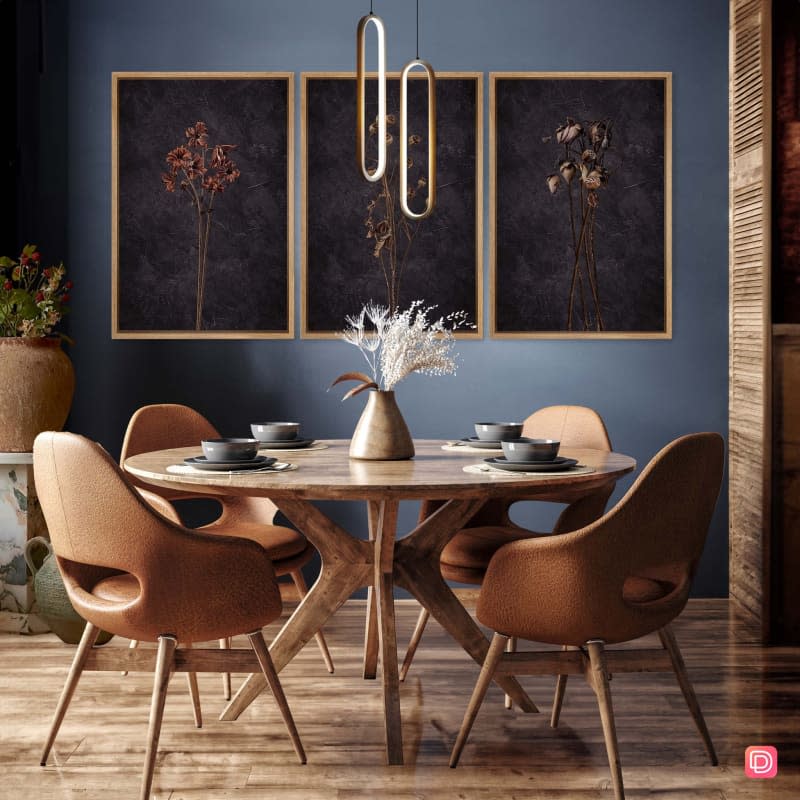
DecorMatters
Part AI design tool, part social platform, DecorMatters combines useful resources with a user-friendly interface to encourage design enthusiasts to flex their creative muscles and dream up their ideal home environment. Fiddle around with an extensive library of furnishings, upload your designs to community boards for feedback, participate in weekly design challenges, and more. When it comes to AI technology, you can utilize DecorMatters to visualize a specific piece of furniture in your space or create a rendering; you can even shop for decor you fall in love with.
Who it’s best for: Amateur designers looking to connect with other decor enthusiasts, grow their confidence and skills, and generate semi-realistic images of their design visions.
Good to know: The renderings generated by DecorMatters aren’t the most realistic I’ve seen, but there’s a good amount of customization possible through the service. The furniture offerings come from name-brand spots like Wayfair, Overstock, World Market, and more. You do have to pay a fee to access the service (after a free trial period), but with basic packages starting at $9.99 a month, it’s a worthy investment for serious design-lovers.
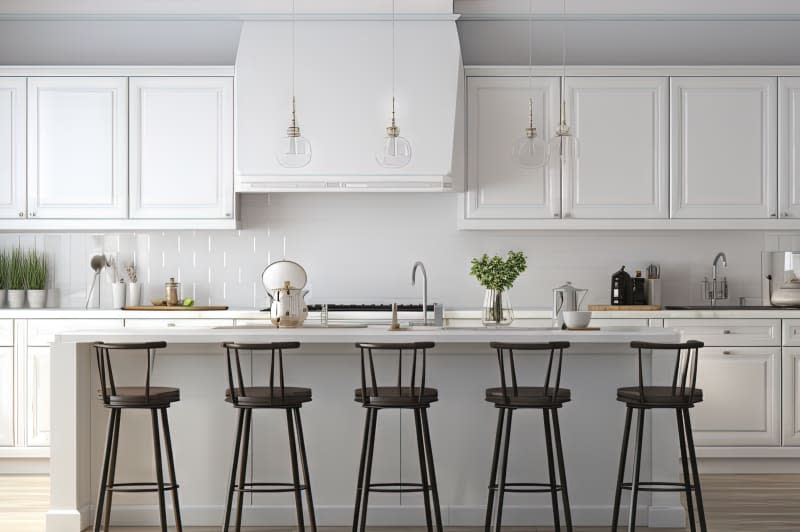
Palazzo
When any tech tool is backed by one of the biggest names on the planet, you know it’s bound to be legit. Launched by Venus Williams in late February, Palazzo is a new entrant into the AI design space, but it already boasts promising appeal, thanks to a competitive mix of inspiration and real-life actualization. You’ll start by taking a quiz to help the program identify your design style, then head to a landing page where you can upload a picture of your room. From there, a chatbot will help you change up anything you want about it, from the overall aesthetic to the color palette. Users get free credits to start but will need to purchase more (or invite friends) to continue using the product.
Who it’s best for: Anyone curious about what their room would look like with a fresh palette or new materials. As it stands, Palazzo isn’t ideal for a homeowner undergoing a significant renovation, although that category is their goal — and I have no doubt the program will get there.
Good to know: Because Palazzo is still in its infancy, many features are limited. While it was easy to get the program to “reskin” a room, it didn’t excel as much when it came to rearranging furniture, adding architectural features, or bringing in new lighting.
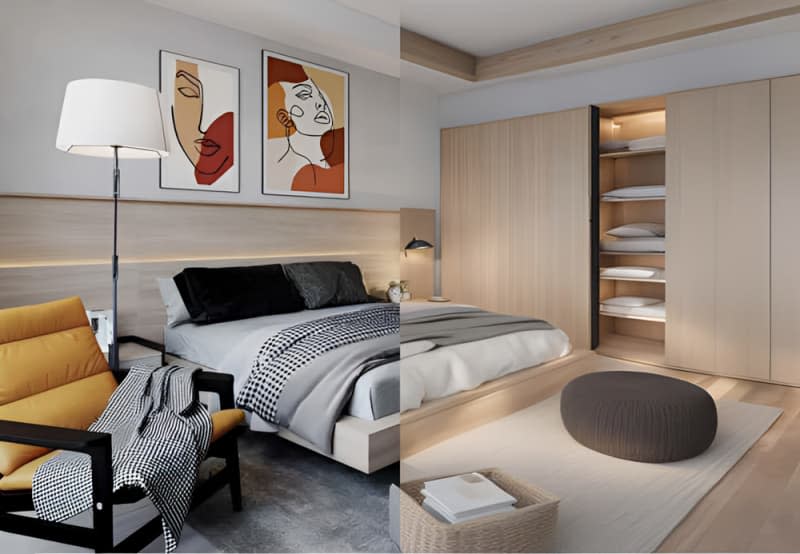
Collov
Geared toward professionals in the interior design space, Collov focuses its AI capabilities primarily on 3D room renderings, with the assumption that the user already has a baseline knowledge of how they’d like their room to look and feel. Like many other programs, each virtual generation works off of a credit system, which can get extremely pricey — especially when you’re an amateur just looking to play around. Unlike many of the other AI programs I tested, Collov allows you to draw right onto an image using their brush tool, then prompting the program to add a green couch there or a leather armchair here. Collov also boasts a strong cabinetry design extension, which I imagine is best used in conjunction with a design studio or cabinet store to get your desired results.
Who it’s best for: Design professionals looking to streamline their 3D rendering workflow or to-the-trade vendors (think: cabinetry design, flooring, or furniture) that want to appeal to clients with lifelike renderings.
Good to know: While Collov does have a few inspiration rooms you can build off, this particular program seems more geared towards those in the design industry; therefore, there’s a baseline amount of design knowledge you’ll need to get the most out of the program. It also was not the most intuitive program I tried — and was among the priciest.
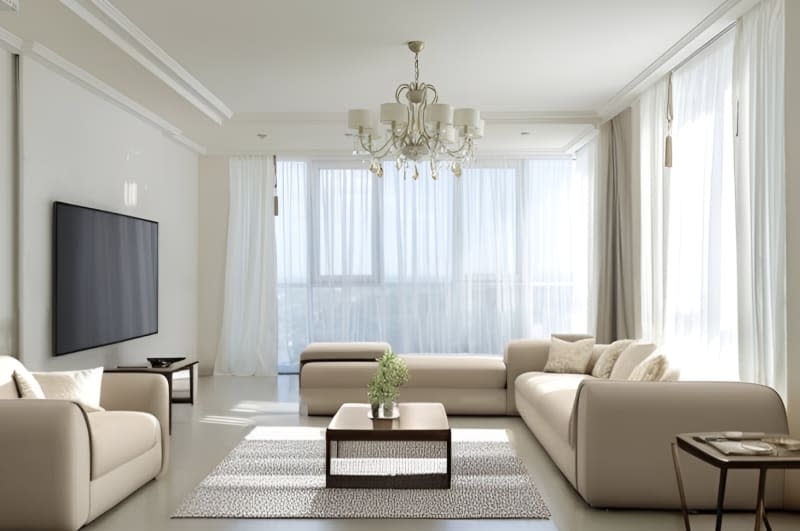
REimagine Home
Basic and intuitive, REimagine Home is a good AI design software for anyone just starting to experiment with the techie trend. It boasts many of the same features as other models, like the ability to upload your own image to work off, as well as landscape and virtual staging capabilities. The visuals generated are pretty lifelike and look much more like the “real deal” than some other programs I tried. That said, there was a bit of a disconnect when it came to trends, and the program often struggled to fully achieve hallmark styles of the design industry, such as transitional or coastal decor — many of the design schemes the program put out felt one-note.
Who it’s best for: Beginners looking to flex their creativity with an AI design tool. You don’t need to know much (if anything) about design before using REimagine Home, which makes it a great entry-level tool.
Good to know: Instead of working off a credit system, REimagine Home offers monthly memberships, ranging from $14 a month up to $99, with varying degrees of capabilities and output.
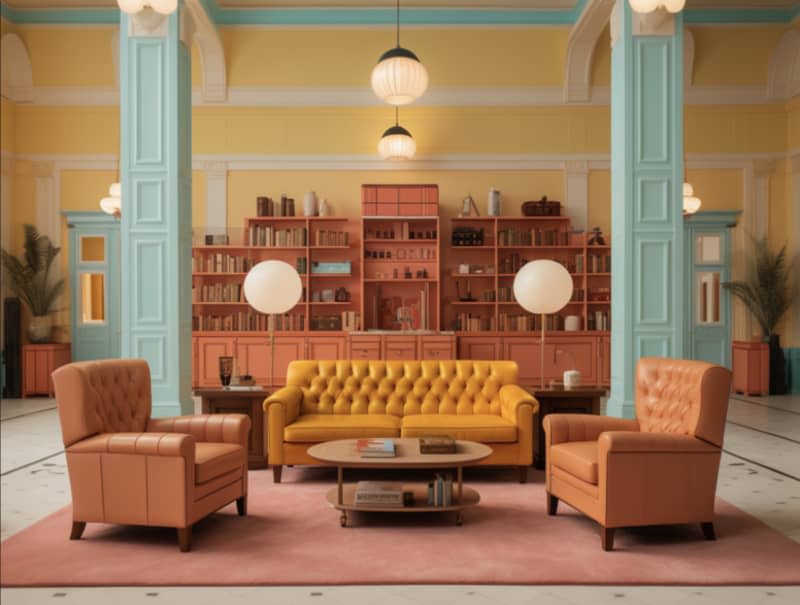
Spacely
Currently in BETA mode, Spacely offers a great middle ground that bridges the gap between design enthusiasts and design professionals. Of all the software I tried, it boasted the most options as a starting point — you can either upload an image of your room, a sketch, or white 3D rendering (which is void of any detail), and Spacely will do the work to render the space according to your specifications. This program was also the most customizable that I tested, with a ton of pre-loaded styles (as well as a chat feature where you can describe the exact look you’re going for) and the ability to tweak the images easily post-render, including moving furniture around. The rooms rendered felt realistic and current, featuring the most of-the-moment trends.
Who it’s best for: Interior design pros looking to cut down on the wait time necessary to get quality renders from a vendor. This program can also be used by design enthusiasts, although it does have a bit of a learning curve and requires a bit more nuanced design knowledge to get the most out of its features.
Good to know: Spacely offers monthly subscriptions for users utilizing the program for their personal use; anyone dubbed an “enterprise” (aka an interior design firm or builder) will need to apply to the program to receive custom pricing.

